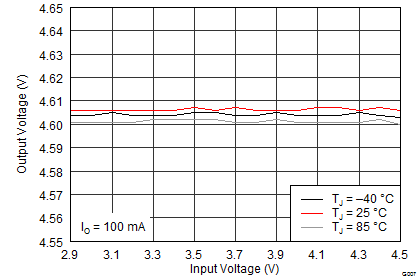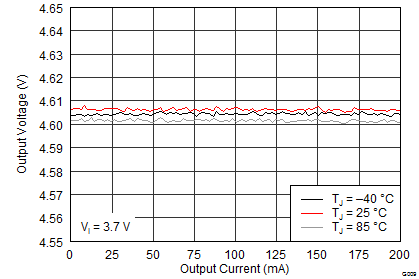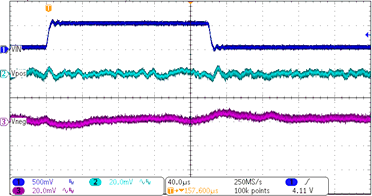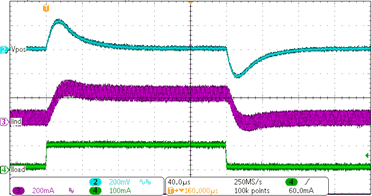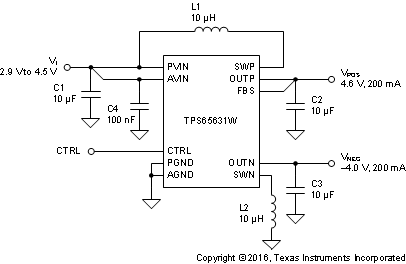SLVSC27D July 2013 – October 2016 TPS65631W
PRODUCTION DATA.
- 1 Features
- 2 Applications
- 3 Description
- 4 Simplified Schematic
- 5 Revision History
- 6 Pin Configuration and Functions
- 7 Specifications
- 8 Detailed Description
- 9 Applications and Implementation
- 10Power Supply Recommendations
- 11Layout
- 12Device and Documentation Support
- 13Mechanical, Packaging, and Orderable Information
パッケージ・オプション
メカニカル・データ(パッケージ|ピン)
- DSK|10
サーマルパッド・メカニカル・データ
- DSK|10
発注情報
9 Applications and Implementation
NOTE
Information in the following applications sections is not part of the TI component specification, and TI does not warrant its accuracy or completeness. TI’s customers are responsible for determining suitability of components for their purposes. Customers should validate and test their design implementation to confirm system functionality.
9.1 Application Information
Figure 8 shows a typical application circuit suitable for supplying AMOLED displays in smartphone applications. The circuit is designed to operate from a single-cell Li-Ion battery and generates a positive output voltage VPOS of 4.6 V and a negative output voltage of –4 V. Both outputs are capable of supplying up to 200 mA of output current.
9.2 Typical Application
9.2.1 Design Requirements
For this design example, use the following input parameters.
Table 2. Design Parameters
| DESIGN PARAMETER | EXAMPLE |
|---|---|
| Input voltage range | 2.9 V to 4.5 V |
| Output voltage | VPOS = 4.6V, VNEG = –4 V |
9.2.2 Detailed Design Procedure
In order to maximize performance, the TPS65631W has been optimized for use with a relatively narrow range of component values, and customers are strongly recommended to use the application circuit shown in Figure 8 with the components listed in Table 3 and Table 4.
9.2.2.1 Inductor Selection
The boost converter and inverting buck-boost converter have been optimized for use with 10 µH inductors, and it is recommended that this value be used in all applications. Customers using other values of inductor are strongly recommended to characterize circuit performance on a case-by-case basis.
Table 3. Inductor Selection(1)
| PARAMETER | VALUE | MANUFACTURER | PART NUMBER |
|---|---|---|---|
| L1, L2 | 10 µH | Toko | DFE252012C-100M |
| ABCO | LPP252012-100M | ||
| Taiyo Yuden | MDKK2020T-100M |
9.2.2.2 Capacitor Selection
The recommended capacitor values are shown in Table 4. Applications using less than the recommended capacitance (e.g. to save PCB area) may experience increased voltage ripple. In general, the lower the output power, the lower the necessary capacitance.
Table 4. Capacitor Selection(1)
| PARAMETER | VALUE | MANUFACTURER | PART NUMBER |
|---|---|---|---|
| C1, C2, C3 | 10 µF | Murata | GRM21BR71A106KE51 |
| C4 | 100 nF | Murata | GRM21BR71E104KA01 |
9.2.3 Application Curves
The performance shown in the following graphs was obtained using the circuit shown in Figure 8 and the external components shown in Table 3 and Table 4. The output voltage settings for these measurements were VPOS = 4.6 V and VNEG = –4 V.
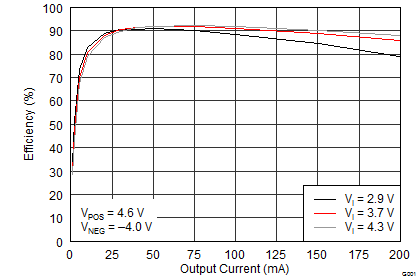
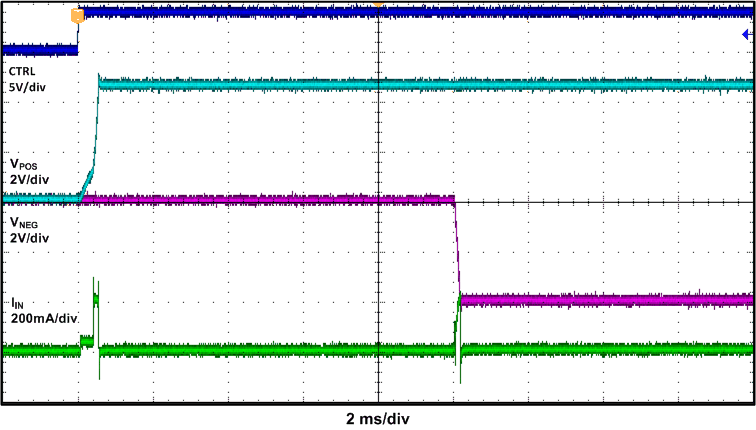 Figure 11. Start-Up Waveforms
Figure 11. Start-Up Waveforms
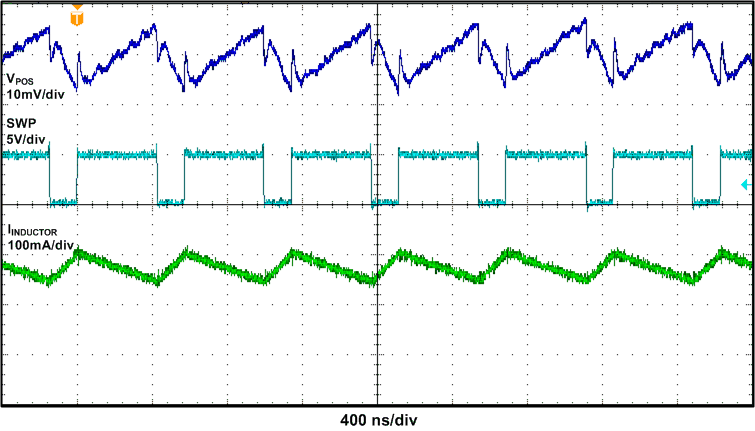 Figure 13. VPOS Switch Voltage, Inductor Current and Output Voltage Ripple (IO = 200 mA)
Figure 13. VPOS Switch Voltage, Inductor Current and Output Voltage Ripple (IO = 200 mA)
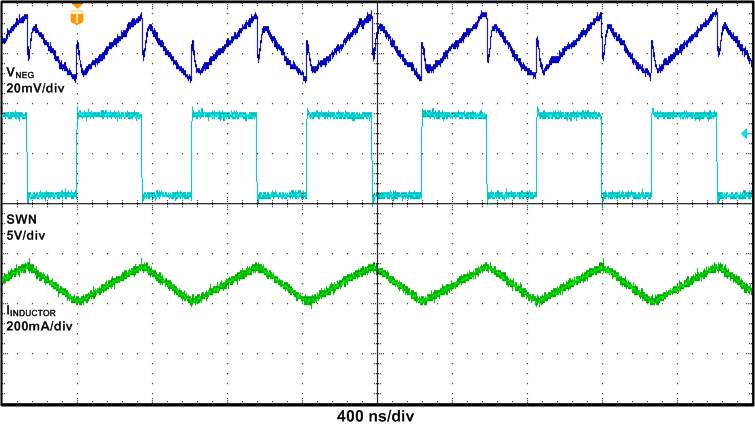
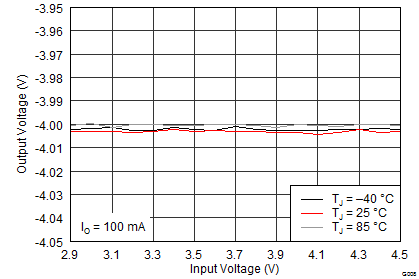
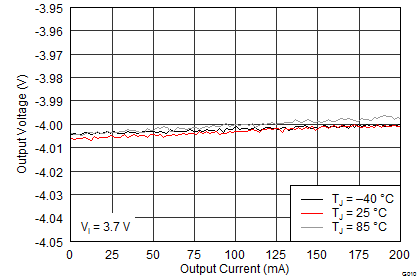
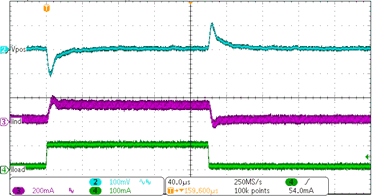
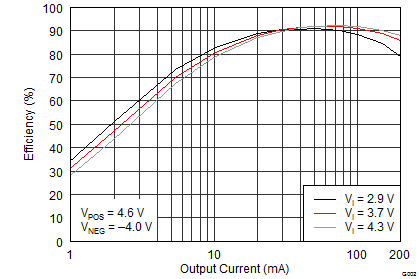
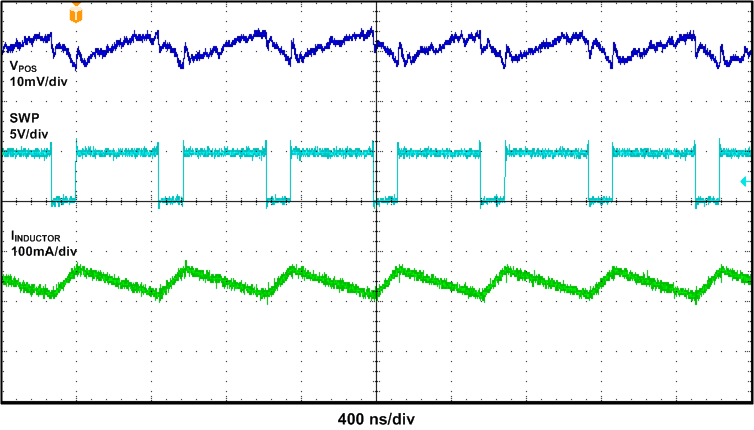 Figure 12. VPOS Switch Voltage, Inductor Current and Output Voltage Ripple (IO = 100 mA)
Figure 12. VPOS Switch Voltage, Inductor Current and Output Voltage Ripple (IO = 100 mA)
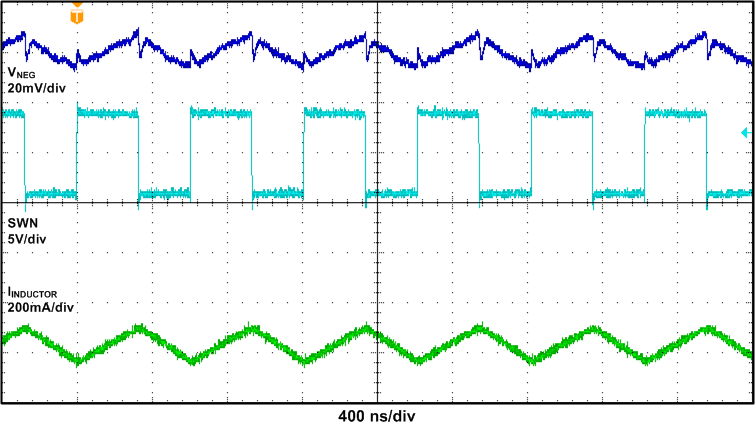 Figure 14. VNEG Switch Voltage, Inductor Current and Output Voltage Ripple (IO = 100 mA)
Figure 14. VNEG Switch Voltage, Inductor Current and Output Voltage Ripple (IO = 100 mA)
